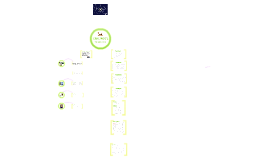
His work includes more than a dozen novels, several volumes of short stories, numerous essays on literary, cultural, and political topics, and some theater. Smitten by the modernity of Miguel de Cervantes and Jorge Luis Borges at an early age, he has written extensively on the cultures of the Americas and those of other places in the world. La Edad del Tiempo: An Interview with Fuentes APPENDIX IIĪrlos Fuentes is one of the major writers of this century in Latin America.

Or He´ctor Aguilar Camı´n, Martı´n Caparro´s, Juan Goytisolo, He´ctor Libertella, Dante Medina, and Luis Rafael Sa´nchezĪn Intellectual Biography: The Journey to El Escorial and Terra Nostra PA R T I I Fuentes, Carlos-Criticism and interpretation. (Texas Pan American series) Includes bibliographical references (p.

The writings of Carlos Fuentes / Raymond Leslie Williams. Library of Congress Cataloging-in-Publication Data Williams, Raymond L. 嘷 ⬁ The paper used in this publication meets the minimum requirements of American National Standard for Information Sciences-Permanence of Paper for Printed Library Materials, ansi z39.48 – 1984. exams or similar sources.T E X A S PA N A M E R I C A N S E R I E SĬopyright 䉷 1996 by the University of Texas Press All rights reserved Printed in the United States of America First edition, 1996 Requests for permission to reproduce material from this work should be sent to Permissions, University of Texas Press, Box 7819, Austin, TX 78713-7819. These essays will be based on prompts from released A.P. Students will write 2 formal essays for unit 1 and 3 formal essays for unit 2. In-class discussion will be based around comprehension, historical and cultural context, thematic analysis (and comparison, as more works are completed), and literary criticism. similar prompts in a journal that will be reviewed weekly by the teacher. Students will take a comprehension quiz (available at the textbook publisher’s site) for each work and will write daily reflections based on A.P. However, we will re-read all of the works at home and discuss each work from a critical point of view as we begin an in-depth analysis of literary criticism instead of merely focusing on comprehension. 1 st quarter: The Short story Many of the students will have read some of the assigned works during the previous year, A.P. 1 st and 3 rd quarters are 3 weeks longer than 2 nd and 4 th quarters, so some of the quarters may seem overloaded when in reality the works spread out nicely as constituted below. Please note that our “quarters” are not even. However, each student will maintain a chronological timeline throughout the course in order to better understand the relationship between works. Course Planner: In organizing the course, I have chosen to group the works thematically, as presented in Abriendo puertas. Understand works of prose, poetry and drama in their social, historical and cultural contexts. Learn to write, think and speak critically. Learn key vocabulary, terminology and techniques used to effectively discuss and analyze Hispanic literature and literary criticism. Although I make authentic films available to students for out-of-class review (Don Quijote, el Burlador de Sevilla, etc.), no films or abridged texts will be substituted for the original works In the course, each student will: Read and study the major literary movements and writers of Spanish and Latin American literature.

The school has student copies of both texts and encourages students to purchase individual copies of Abriendo puertas in order to facilitate note-taking and review. (Evanston, Ill.: McDougal Littell/Nextext, 2003) as the primary text, with additional resources drawn from Momentos cumbres de las literaturas hispánicas: Una introducción al análisis literario (Upper Saddle River, N.J.: Pearson Prentice Hall, 2004). We use the text Abriendo puertas: Antología de literatura en español, 2 vols. Students will read and discuss each of the works included on the required AP Spanish Literature reading list.

This course will be taught entirely in Spanish. Students also learn to read, understand and discuss literary analysis and criticism through the writings and commentaries of experts in the field. Both Peninsular and Latin American authors are represented in the genres of poetry, drama, short stories and novels. AP Spanish Literature Syllabus Course Overview: The AP® Spanish Literature course covers an overview of Hispanic literature from the medieval period through the 20 th century.


 0 kommentar(er)
0 kommentar(er)
